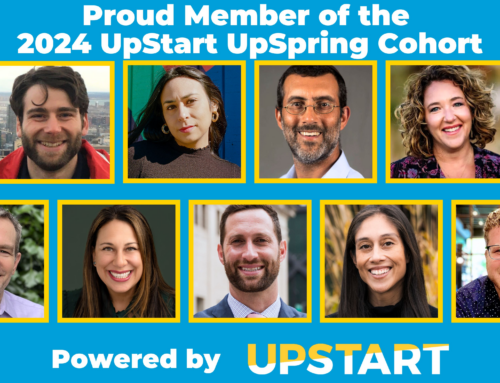Last week William Foster, Executive Director of the Jacobson Family Foundation and former Bridgespan Group Senior Partner, spoke about philanthropic and executive leadership in bringing nonprofits to scale at an event sponsored by UpStart Bay Area, the Foundation Center, and the Jewish Community Federation and Endowment Fund.
Foster raised a number of important ideas for nonprofit leaders and funders to consider, some of which Ill explore here.
Scale
Before the event I had an opportunity to read a fascinating interview that Foster did in Shma with UpStart CEO Toby Rubin. What struck me most in this article was Fosters definition of scale, not as a catchy synonym for growth but as arrival at a particular point that achieves the nonprofits vision of success.
Foster made this argument again last week, highlighting, as he did in the interview, Geoffrey Canadas choice to limit Harlem Childrens Zones focus to 24 square blocks.
As someone who isnt entirely comfortable with the constant drumbeat for growth in our society, Im fascinated by the idea that scale for nonprofits could be something other than growth in the traditional sense. Id love to see more examples, though, of how nonprofits are defining this elusive arrival point if not based on growth. Im having a hard time wrapping my brain around what this looks like.
Funding Models
Prior to Fosters event I also read for the first time his immensely popular Stanford Social Innovation Review article Ten Nonprofit Funding Models. I had been hearing about it for years, but it wasnt until I read the article that I really began to understand what a funding model is and how important it is for nonprofits to have one (and to know it).
Fosters contention, which he also made at the event, is that there is a relationship between the programs a nonprofit runs and the funding sources available to support it. The bigger an organization gets, the fewer the haphazard options at its disposal to meet its budget.
Few start-ups will reach the size Foster refers to (roughly $25 million on up), but the idea of being strategic about your funding model is important for every organizations long-term sustainability. As Foster has argued, you can improvise a $1 million budget, but even for those who do even for those who are able to meet their budget because their sisters next door neighbor happens to be a billionaire its supremely important to recognize what your strongest funding sources should be based on the work you do. This focus will enable nonprofits to build a funding base that will still be there when the more random, idiosyncratic support disappears.
Suggestions for Funders
Foster shared a number of important lessons for philanthropists and foundation executives, but here are two that stood out to me:
- Patience is important. Since change doesnt happen overnight, funders should recognize the arc of time it will take to succeed and be prepared to wait awhile for results.
- Funders should make their strategic and staffing decisions grantee-oriented a major shift. For example, hire program officers who have the technical expertise to help grantees scale rather than just those with issue expertise.
Foster rightly pointed out that since creating change is hard, its often difficult to be a funder if you want to create change (whereas its immensely easier if your goal is simply to do good things with your philanthropy). Far from trying to scare off such funders, Foster meant this as encouragement to them to recognize and persevere through the inherent difficulties in philanthropy.
I look forward to more events like the one William Foster did last week, which bring together funders and nonprofit professionals to learn and network with one another. As Foster noted, more open and honest dialogue is a key ingredient for creating an effective philanthropic and nonprofit sector.
Additional Reading
Ten Nonprofit Funding Models (SSIR)
Finding Your Funding Model (SSIR)
The Challenges in Scaling Growth of Nonprofits (Adin Millers blog)
Hand-in Hand: Philanthropic Innovation and Social Entrepreneurship (UpStart blog)
Mike Berkowitz is co-founder & CEO of Third Plateau Social Impact Strategies, LLC, a philanthropy and nonprofit consulting firm. Mike is also the co-founder and President of the One Percent Foundation.
Our purpose is to enable entrepreneurs to bring bold Jewish ideas to light. We help them reach Up to people in new ways that are meaningful, more inclusive, and create a brighter future for our Jewish community and the world we share.




